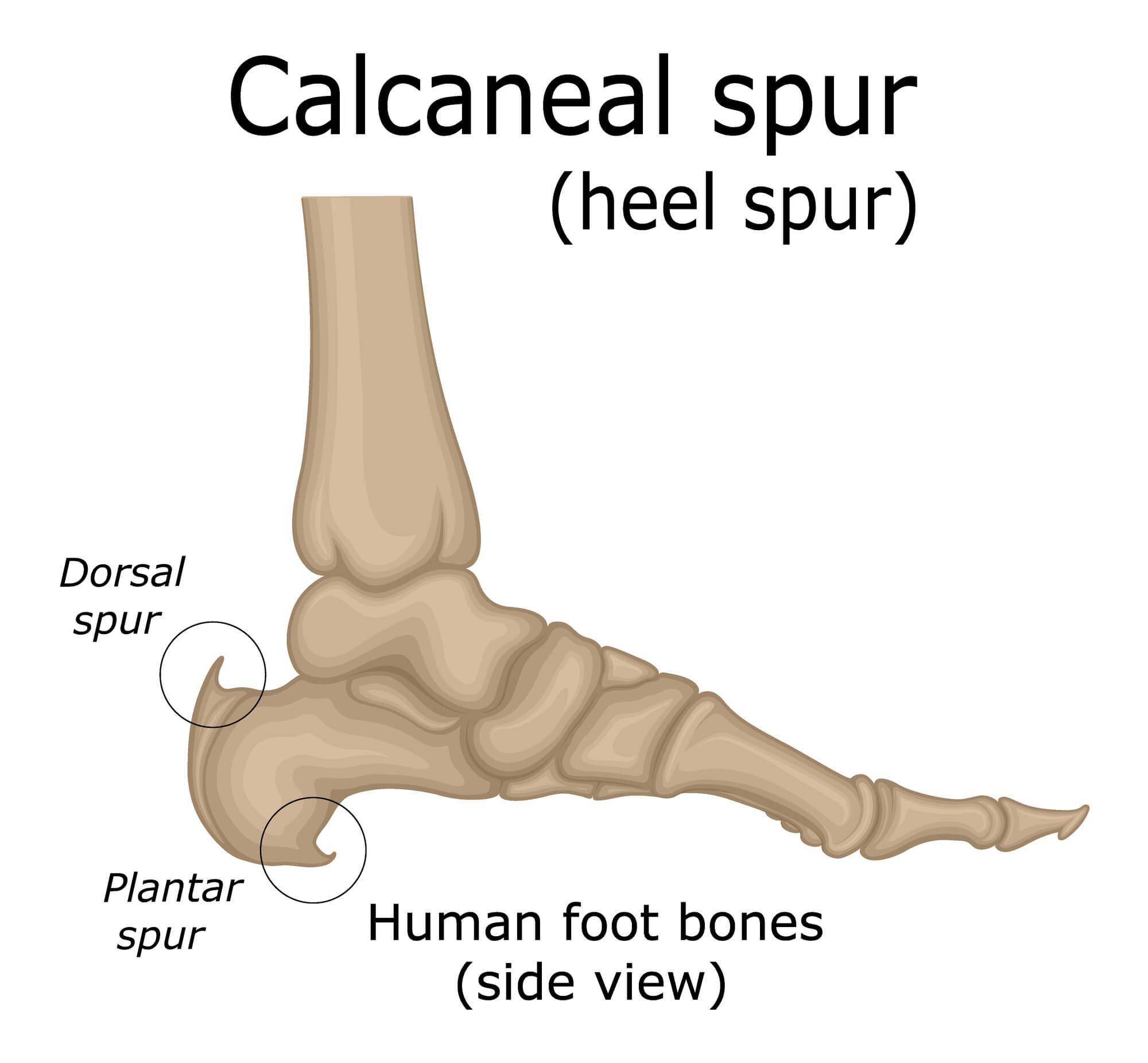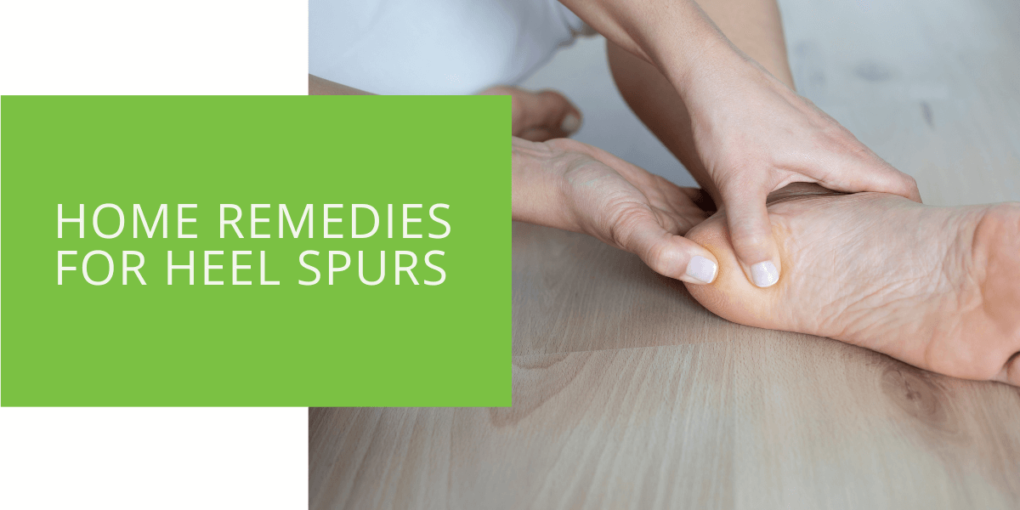Home Remedies for Heel Spurs
Heel spurs can be a source of considerable discomfort and pain for individuals. These bony growths on the underside of the heel bone can result in inflammation and heel pain. While seeking professional advice from a podiatrist is essential for a proper diagnosis, several home remedies can help alleviate the symptoms associated with heel spurs. This article will explore various effective remedies that can relieve and promote healing.
Understanding Heel Spurs
Heel spurs are calcium deposits that develop as bony protrusions on the heel bone or the plantar fascia, the fibrous tissue connecting the heel to the toes. They are often associated with plantar fasciitis, a common foot condition characterized by plantar fascia inflammation. Heel spurs are usually detected through X-rays and may cause intense pain, especially when standing or walking.
Symptoms and Diagnosis
Common symptoms of heel spurs include sharp, stabbing pain in the heel, tenderness, inflammation, and discomfort while walking or running. However, it's important to consult a podiatrist for an accurate diagnosis, as these symptoms can overlap with other foot conditions, such as plantar fasciitis. A podiatrist will perform a thorough examination, review your medical history, and may request imaging tests to confirm the presence of heel spurs.
Lifestyle and Home Remedies
Rest and Avoiding Overuse
Resting the affected foot is crucial in providing relief from heel spurs. Avoid activities that put excessive pressure on the heels, such as high-impact exercises and prolonged standing. Opt for low-impact activities like swimming or cycling to reduce strain on the affected area. This allows the inflamed tissues to heal and promotes faster recovery.
Proper Footwear
Choosing supportive shoes that provide adequate arch and heel support is essential for managing heel spurs. Look for shoes with cushioned insoles, good arch support, and shock-absorbing soles. Avoid high heels and flat shoes that offer minimal support. Orthotic inserts or shoe inserts specifically designed to relieve pressure and distribute weight evenly can also be beneficial.
Stretching and Strengthening Exercises
Stretching and strengthening exercises can help alleviate the pain associated with heel spurs and improve the flexibility and strength of the calf and foot muscles. Some effective exercises include calf stretches, towel curls, and toe stretches. These exercises can be performed multiple times daily and should be done in a pain-free range of motion.
Ice and Heat Therapy
Applying ice packs to the affected area can help reduce inflammation and alleviate pain. Wrap an ice pack or a bag of frozen peas in a thin towel and apply it to the heel for 15-20 minutes several times daily. Heat therapy, such as using warm compresses or soaking the feet in warm water with Epsom salt, can also provide relief by increasing blood flow to the area and promoting relaxation.

Orthotic Inserts and Shoe Modifications
Orthotic inserts are specially designed devices that provide additional support and cushioning to the feet. These inserts can help relieve pressure on the heel and distribute weight more evenly. Consult with a podiatrist to determine the most suitable type of orthotic insert for your condition. Modifying your shoes by adding heel pads or using footwear with built-in arch support can also help alleviate discomfort.
Pain Relief Measures
Over-the-counter nonsteroidal anti-inflammatory drugs (NSAIDs), such as ibuprofen or naproxen sodium, can help reduce pain and inflammation associated with heel spurs. However, it's important to use them as directed and not rely on them as a long-term solution. It's essential to address the underlying cause of the heel spurs rather than solely relying on pain medication.
Weight Management
Maintaining a healthy weight is crucial for reducing strain on the feet and minimizing the pressure on the heels. Excess weight can exacerbate the symptoms of heel spurs and delay the healing process. Incorporate a well-balanced diet and regular exercise into your routine to achieve and maintain a healthy weight. This will not only benefit your overall health but also promote the well-being of your feet.
When to Seek Professional Help
While home remedies can provide relief and help manage the symptoms of heel spurs, it's important to know when to seek professional assistance. If the pain persists, worsens, or interferes with your daily activities despite trying home remedies, it's time to consult a podiatrist. They can evaluate your condition, provide an accurate diagnosis, and recommend personalized treatment options based on the severity of your heel spurs.
A podiatrist may suggest additional physical therapy, custom orthotics, or corticosteroid injections to alleviate the pain and promote healing. Surgery may sometimes be necessary if conservative treatments fail to provide relief.
Conclusion
Heel spurs can be a source of significant discomfort and interfere with daily activities. However, with the right approach, including lifestyle modifications and home remedies, you can relieve pain and promote healing. Remember to consult a podiatrist for a proper diagnosis and personalized treatment plan tailored to your needs. By taking proactive steps to manage your heel spurs, you can regain comfort and maintain the health of your feet.
Incorporating rest, choosing proper footwear, engaging in stretching exercises, applying ice and heat therapy, using orthotic inserts, and managing weight are all valuable strategies to alleviate the symptoms of heel spurs. Following these home remedies and seeking professional guidance can effectively address heel pain and improve your overall foot health.
Remember, if you experience persistent or worsening symptoms, it's important to consult with a qualified podiatrist. They will provide you with the most appropriate treatment options to address your specific condition and help you on your path to recovery.
Key Takeaways
- Heel spurs are bony growths on the heel bone that can cause inflammation and pain.
- Home remedies for heel spurs include rest, wearing supportive footwear, performing stretching and strengthening exercises, using ice and heat therapy, using orthotic inserts, managing weight, and seeking professional help when needed.
- Consulting a podiatrist is important for a proper diagnosis and personalized treatment plan, including physical therapy, custom orthotics, injections, or surgery.

